Understanding Human Irrationality

Eugen Eşanu
Designer and casual writer. Currently building Shosho.co.
... And How it Influences User Decisions
Coke Zero and Light should taste a little bit less sweet than the regular Coke; otherwise, you won’t believe it has no sugar. The same way you think that the Colgate toothpaste, which has two stripes (red and blue) works better than ordinary white toothpaste. Your brain is wired to believe that the Colgate toothpaste is more complex and does its job better, meanwhile when it gets into your mouth, there’s no difference. Also, people didn’t quit smoking because it killed them but because it was made uncool.
Sometimes we act in irrational ways, and those cases you can explain them through evolution. Nowadays, creating a great product is not enough. We also need to help people make better decisions and experiences. The experience isn’t about what something does, it’s how it does it. It’s not what the features and functions of the product or service allow us to do, it’s how it makes us feel.
Engineers, medical people, scientific people, have an obsession with solving the problems of reality, when actually … once you reach a basic level of wealth in society, most problems are actually problems of perception― Rory Sutherland
Some simple products we use daily can influence our behaviour on a subconscious level more than we think. Why? Because people don’t always have the time to consider every action through. Recent academic studies in cognitive psychology, social psychology and behavioural economics suggest that over 90% of our decision-making is conducted somewhat unconsciously and automatically daily. So here is a collection of thoughts and ideas on why certain things work and others don’t — from a human behavior perspective.
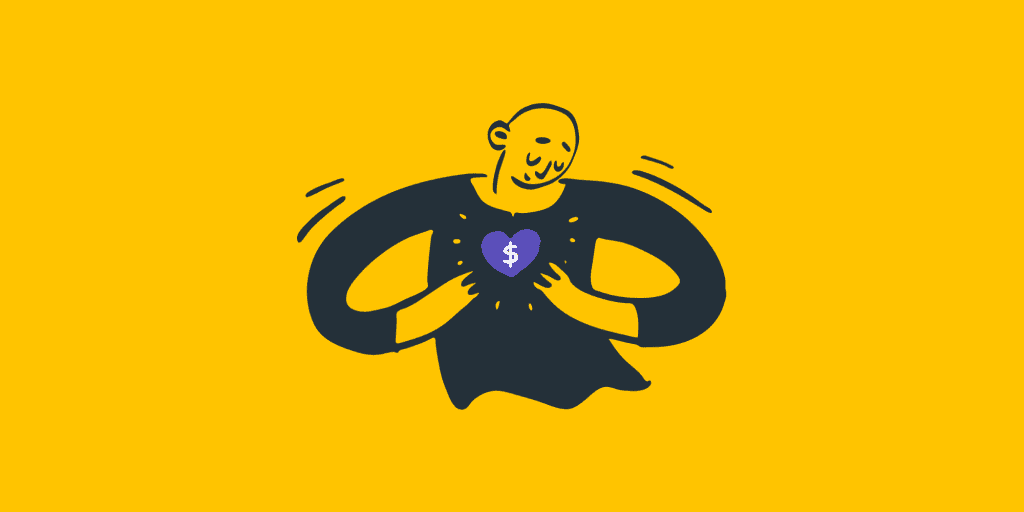
Want to Make People Save More Money?
Then the power of a default would help you. For lots of reasons, people have a general tendency to stick with their current situation. Banks or financial apps could automatically take 10% of someones salary and put it into the savings account. This can be done when you set up a new account or just add the feature in-app. Why this would work? Because we don’t like changing the default settings.
Status quo bias is an emotional bias; a preference for the current state of affairs. The current baseline (or status quo) is taken as a reference point, and any change from that baseline is perceived as a loss.
An example of status quo bias is when you buy a new cell phone — you have a series of choices to make. Change the ringtone, wallpaper, pre-installed apps, the voice mail message and so on. But for most products, the manufacturer has picked for you a particular setting for all these features already. Research shows that whatever the default is, people tend to stick with it. Even when stakes are much higher than choosing what ringtone your phone has.
Financial apps or banks that deal with salaries, could automatically take monthly 10% from the your salary and put it on the savings account. People will almost never change that. Because we are lazy and it requires a cognitive effort to make a change. This way you can help people become richer.
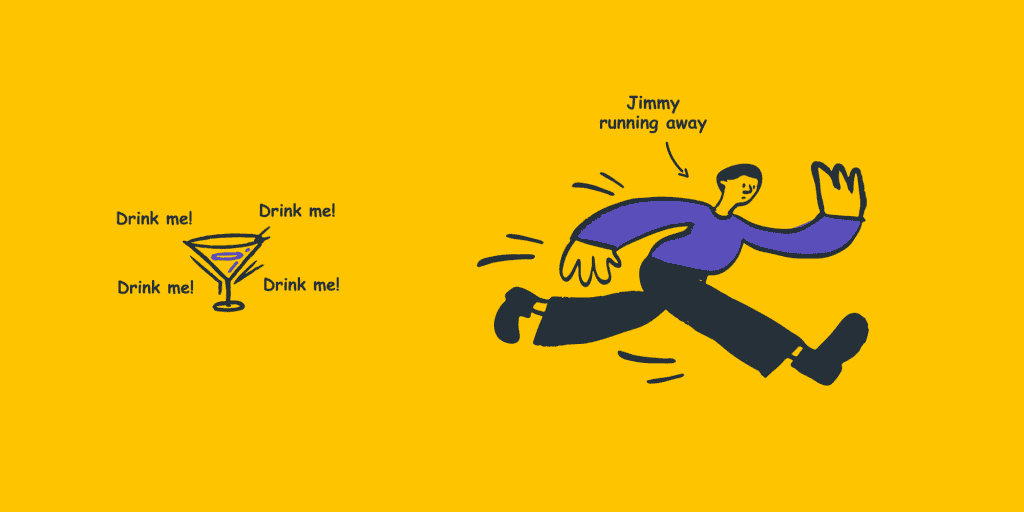
Why Men Are Reluctant to Order Cocktails
Ever asked yourself why men are reluctant to order cocktails in a bar? It happens because they don’t have the knowledge in which glass it will be served. If they knew it would arrive in a hollowed-out pineapple, they would order a glass of beer or whiskey instead.
Men, let’s admit it; we are just “afraid” to drink a cocktail from a “feminine” looking glass. It’s just in us. So how can you solve this barrier? Put icons of how the glasses look for each cocktail. This way, you remove the pain of thinking in which glass it will come to you. Some bars have solved this issue by serving all cocktails in a glass with neutral shape.

Words Can Change the Taste of Food
In his book Alchemy, Rory Sutherland gives a great example of how words can change the taste of food. In a phone call, he received concerns from a biscuit maker about how sales plummeted. The company released a new version of their biscuits which are lower in fat. They perfected the recipe, so the taste remains the same, the only improvement being — you can consume it with fewer calories. The manufacturer was proud of this achievement and put it on the package: “Now with lower fat”. Why wouldn’t you do that?
But that was also the problem. When you tell people that a product is healthier, it also subconsciously changes the taste of it. It doesn’t matter how something tastes in blind testings. If you put “low fat” or any other health indicators on the package, the taste changes too. This way, you will make the product taste worse if the customer experienced the previous versions of it.
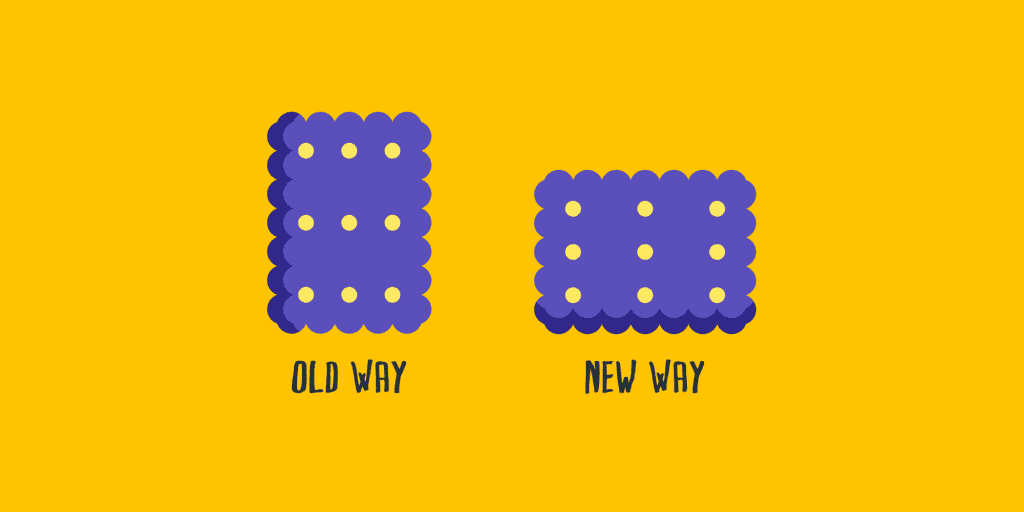
Cadbury’s Problem with Chocolate
Similar happened to the well-known chocolate company Cadbury. Many years ago, Cadbury received many complaints from their customers on “why did you change the recipe of your dairy milk chocolate?” At first, they were confused. They haven’t changed their formula for years.
But what they have changed instead was the way the chocolate plate looked. They changed the shapes of the blocks and how you would break it. They rounded their corners, and apparently smoother shapes taste sweeter.
Market research is an unreliable guide to know how people think, decide and act.
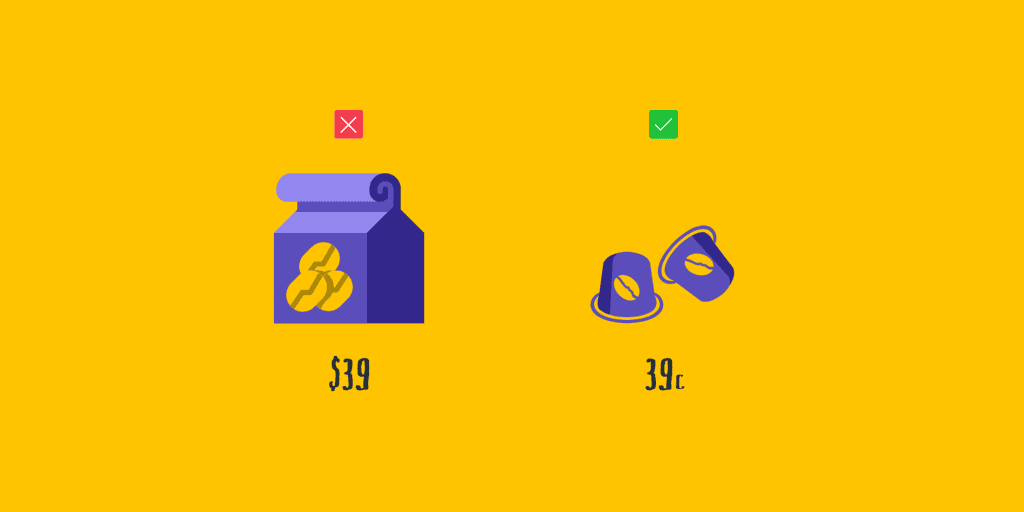
Will You Pay $39 for a Jar of Coffee?
I would say that, yes, but in a different context. Some of you may say that this approach will never work. But people also said in market research that nobody would pay $39 for a jar of coffee. At least Nespresso proved everybody wrong when they sold you their pods of coffee for 39 cents.
The goal is not to design something new, but rather reframe it in a different context. So that we can perceive value in a different form.
Why Nespresso works? Because when you buy or use their coffee pods, you don’t compare them to Nescafe, Lavazza or any other cheaper coffee brand. Our frame of reference is Starbucks coffee which costs $3 per cup. When you put that pod in the machine, you are thinking “Damn, how much money it saved me.”
Almost nobody will pay $40 per jar of coffee in a shop, but they will pay 39 cents per pod of coffee. Which ends up costing you those $40.
Same applies to accessories and other smaller products if point of reference is bigger. For example, Apple. Their best seeling products in 2018 was dongles. Why are people paying $30 for a cable meanwhile they can buy one for $3 on amazon? Because when you buy a macbook for $2499, your point of reference for dongles is not Amazon products with cheaper price, but the macbook you are buying. In that context, the $20 is very cheap in comparison with the $2499 you are paying.
Context dictates behaviour.

The Power of Reframing Situations
Those who own a car and ever got a fine for parking in the wrong place know how frustrating it is. What good can be about getting a fine? I lose my money. But what if we reframed the situation? What if on the ticket, you got a message — “You got a fine for parking in the wrong place. But the money you will pay will go into the budget of improving our city roads.” Different context. Now you don’t feel that bad of paying money. How much will this solution cost you? Nothing. But you have improved chances of getting those fines paid on time and reduced the frustration of drivers.
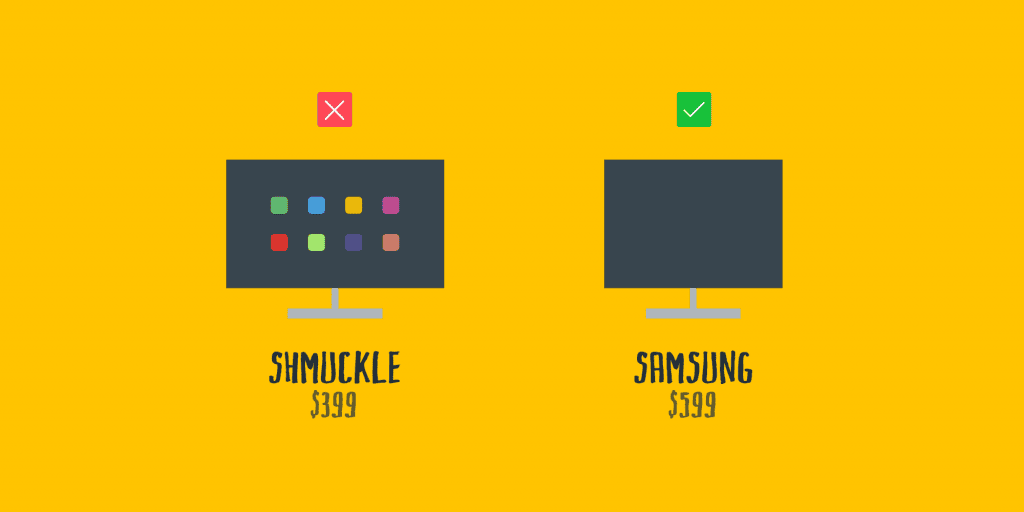
Understanding Brand Risk
When designing and building a product, our job is to minimise the number of negatives from a product. In certain situations we buy products not because they benefit us, but because we are comfortable buying that brand. And if you think the examples above is cheating, I would say you don’t understand humans.
For example, you go into a shop and want to buy a new TV. You have two choices, buy one from Samsung and one from an unknown brand called Shmuckle. On paper, Shmuckle is way better than Samsung. Has 4k, Dolby sound, comes with a TV subscription, etc. Meanwhile, Samsung TV barely touches on the same benefits and is $200 more expensive.
A large part of the reason we like brands is because they are a guarantee of low variance. A guarantee of consistency — in quality and experience.
In this case, most people would choose the Samsung TV. Not because it’s better, but because there is less brand risk. Shmuckle can risk selling a bad TV because nobody knows who is this brand. They may come or disappear the next day. Meanwhile, Samsung has invested effort in staying on the market. They have invested many resources into creating and keeping their reputation. They have more to lose than Shmuckle. That’s why you would pay the premium for a worse TV — avoiding risk. Risk avoidance is something ingrained in us, and we can use it to design better choices.
You have to realise that in most contexts all we are trying to do is minimise the risk of a bad experience. That’s why if you go to a new city you would prefer eating at a McDonald’s rather than a local restaurant. Because you are familiar with food taste consistency.
Encouraging Less Spending
Let’s say you are the owner of a finance app. And you have a section in the app which allows you to set a budget and how much you spend each month for different categories. Your goal is to encourage fewer spendings or that people never fail to achieve their goals. One approach is to showcase how much money you have spent and somewhere below to showcase how much you have left. But knowing human behaviour, for us it is more painful to see that we are losing something than gaining. So gaining “expenses” in this case would be a terrible approach. Instead, showing how much you have left is better. This refers to loss aversion.

Loss aversion refers to people’s tendency to prefer avoiding losses to acquiring equal gains. “It is better to not lose $5 than to find $5.” What distinguishes loss aversion from risk aversion? The utility of a monetary payoff depends on what was before experienced. Or was expected to happen. Some studies have suggested that losses are twice as powerful, psychologically, as gains.
Only thinking about spending money can make you experience a kind of physical pain. If you were to be put into a brain scanner right now and we played a game where you lost your money, the part of the brain that would light up is the same part that feels physical pain. So showcasing the amount you have left helps trigger those parts of the brain which will tell you — “Hey I have to spend less. Otherwise, I am going to lose it all.” Meanwhile showing how much you spent is gives you zero context.
Give people a reason and they may not supply the behaviour. But give people a behaviour and they will have no problem supplying the reasons themselves — Rory Sutherland

Our Brain Works in Weird Ways Sometimes
And we have to accept that. The examples from the above work because of evolution — it helped us to survive as a species. So using and understanding these principles is essential when designing products. Let’s take another example of how your brain helps you decide. If you are to choose between two types of laundry detergent, without any context, you will select the one which stands out. You have two examples — Example A is a plain white powder, and Example B is the same powder but with red sprinkles on it. No brand name, no information on what does it contain, how effective it is etc.
And if I would ask you — “Which one do you think is more efficient and which one would you choose?” Almost all people go with Example B. Why? Evolution. Those sprinkles make you think it’s more efficient. Even though they add nothing.
Nature applies the same principles on all beings. For example, you walk through a forest, and you see some berries. How do you know when to pick up one? When it is coloured. Colour gives you a suggestion that the fruit is ripe and good to eat. If the berry had been green or blended colours with the bush/tree it grows on, you wouldn’t pick it up. Nature uses these type of signals to help you navigate this world. We can use the same signals or nudges to help people make better decisions.
- For more articles, subscribe to our Magazine Newsletter.
- Follow us on Facebook, Twitter and LinkedIn.
- Join the Community on Slack and Facebook.
- Listen to our Podcast on Apple Podcasts, Google Podcasts and Spotify.
If you want to contribute to Phase Magazine, write to us here:
Start Animating
Get Started with Our Free, Web-Based Platform.
© Phase Software GmbH 2024